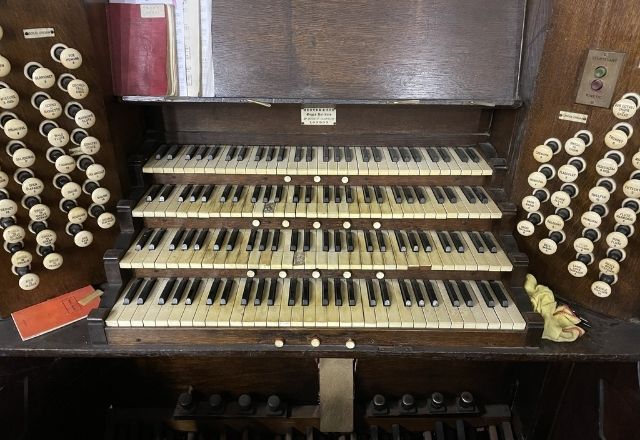Pipe organ projects are known to take many years in the planning as they are always complex and expensive, often involving structural alterations and extensive fundraising.
By contrast digital instruments are usually agreed and installed in less than 12 months, and often as quickly as a few months when replacing an existing digital instrument.
St Paul’s Brighton which we recently completed was a notable exception to this rule. Three years elapsed between receipt of their deposit and the final installation of the instrument. Covid clearly played a part in this delay but not much of it.
St Paul’s is a Grade I listed building with a Grade I (BIOS) listed pipe organ, which was a main reason to the delay. Coupled with a change of personnel at St Paul’s perhaps contributing to a loss of impetus.
However we finally got there and a 3 manual ‘temporary installation’ was completed in December 2020. It is temporary because there are hopes that the fine pipe organ may at some point be restored again.
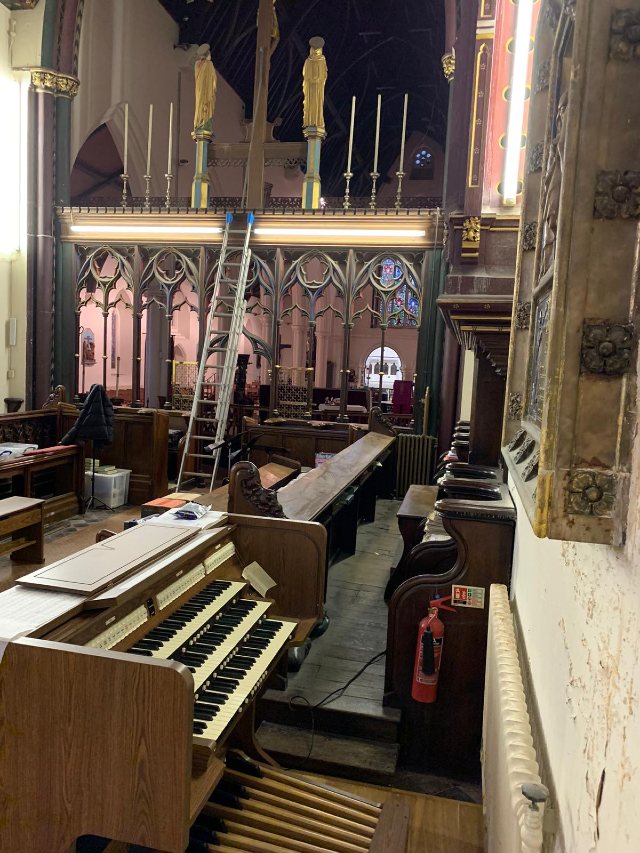
Before we get into that story here is a little history of the church.
St Paul’s – “The Fisherman’s Church”
St Paul’s is also known as “The Fisherman’s Church” as it replaced in about 1840 a small chapel on the site used by local fisherman.
Local vicar Henry Wagner commissioned Brighton-based builders Cheesman & Son to construct the building to a design by R. C. Carpenter. Henry Michell Wagner, Vicar of Brighton from 1824 until 1870 was the son of wealthy hatter Melchior Henry Wagner and grandson of Henry Michell, Vicar of Brighton 1744-89, had six new Brighton churches built.
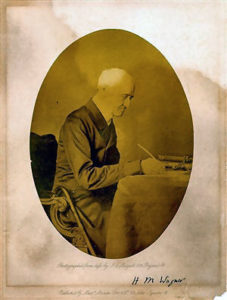
Wagner died on 7 October 1870 aged seventy-seven after forty-six years as vicar. All churches were hung in black and large crowds watched the funeral procession from St Nicholas’ Church to the Parochial Cemetery in Lewes Road.
Wagner’s intention had always been for the church to be his son Arthur’s first ministry following his ordination, and Arthur asked for the design work to be undertaken by a separate designer.
Arthur Wagner was 22 years old at the time the land was purchased, and was preparing to be ordained. He was a follower of the Oxford Movement (or Tractarian Movement), whose favoured architectural style at the time was a revival of the 14th century aspects of Gothic architecture. Features of this design style clearly remain visible in the building today which sadly now sits rather hemmed in amongst an otherwise retail landscape.
Enjoy a 3D tour of this fine Brighton church done with our Matterport camera. See if you can see the rood screen speakers!
The Pipe Organ at St Paul’s Church
The core of the pipe organ was made by Clapham firm Hunter and Sons and may incorporate parts of an earlier instrument by Holdich. So it dates from about 1850/1860 and has a pneumatic action.
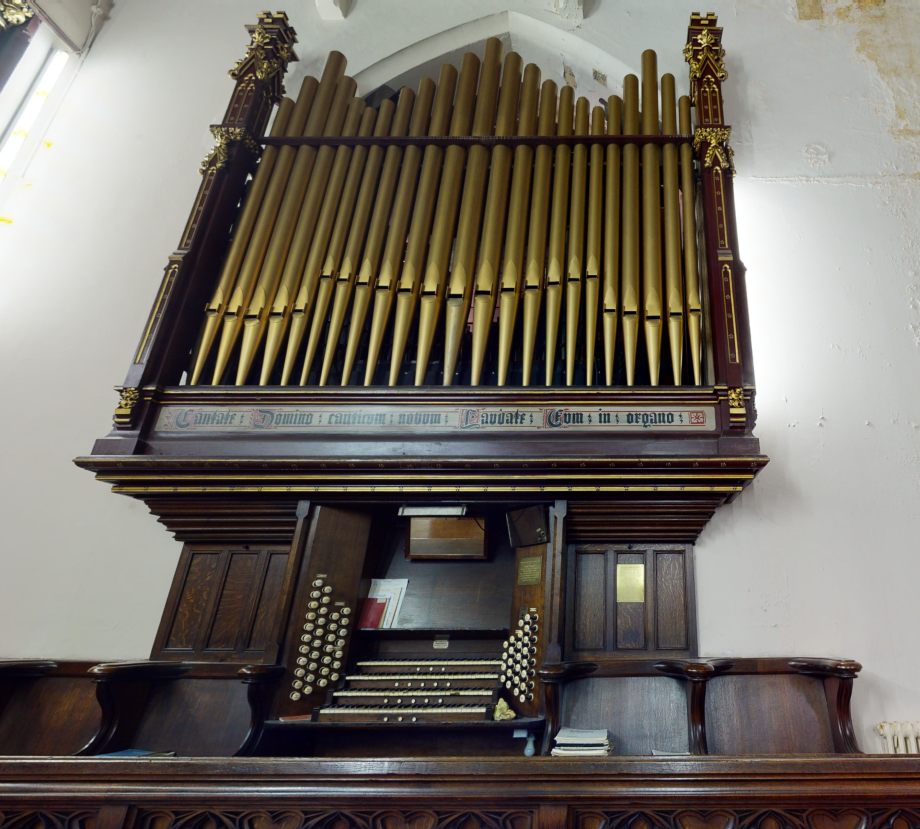
When I visited over 3 years ago there was almost more air leaking from the action than found its way to the pipes. So it was impossible to get a sense of how this instrument may once have sounded.
Today only the choir organ functions, the rest is silent. The job of restoration is formidable as the roof above the pipes showers down a continuous rain of stone dust and flaking paint that falls directly into the pipes save for where some fabric has been stretched to help shield the pipes below from this avalanche.
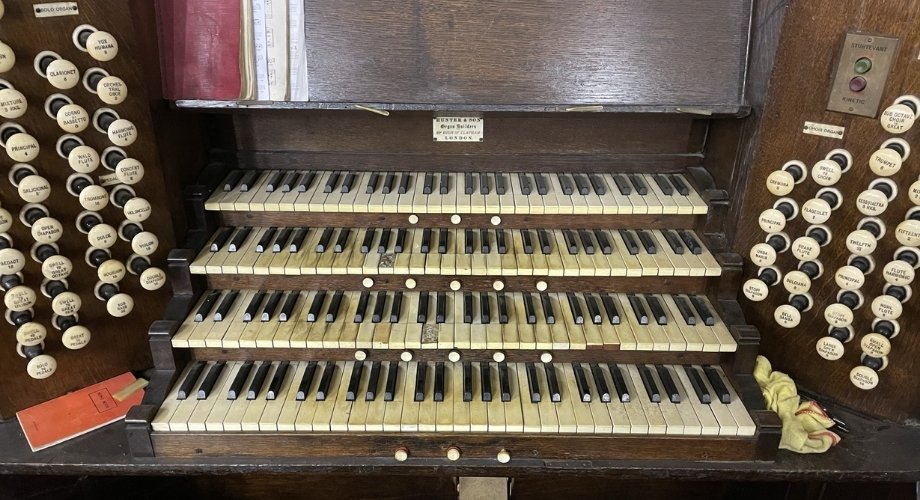
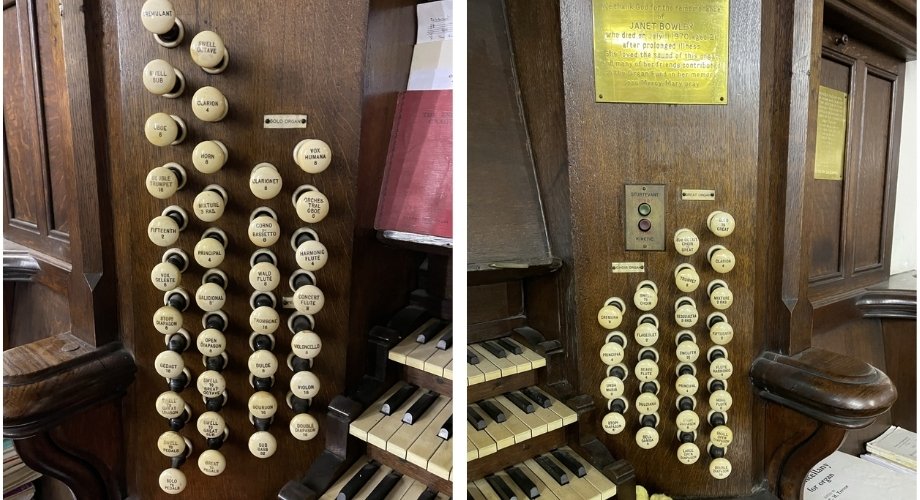
As you see the console was prepared for a solo division which was never built. Indeed, given the lack of space now in the chamber the solo must have been the glint of a very optimistic eye or a typical Victorian statement of intention that had no hope of becoming reality.
The faculty process inevitably involved safeguards to ensure that this instrument could one day be restored. While of course sensible, I can only think of one instrument in my past 14 years with Viscount, where our instrument installation made future restoration any more difficult than it need have been.
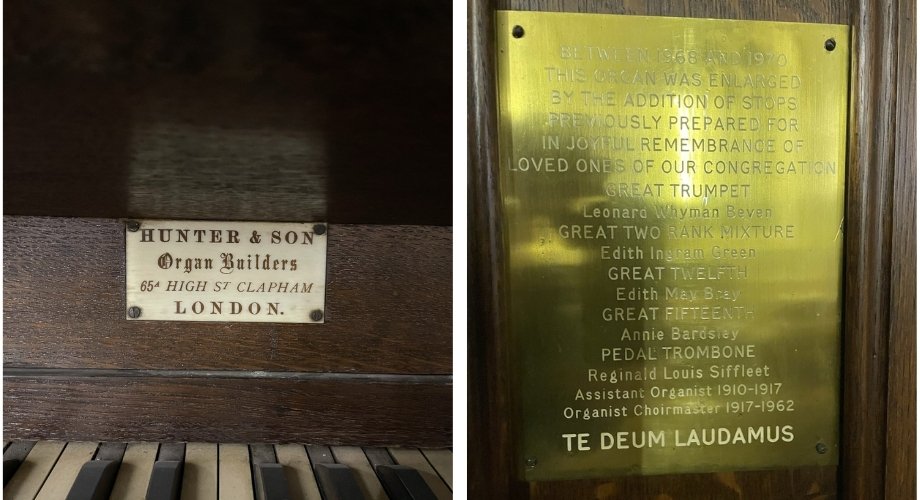
I wont burden you with the details but that ‘work of destruction’ was carried out by the church after we left everything as we found it.
Nevertheless it is perhaps a lesson to learn that the faculty process in place will protect a worthy instrument as much from the ill advised work of a church’s own members as the sometimes ‘marauding digital organ installers’, which from time to time I hear ourselves and competitors accused of being.
The Viscount organ installation at St Paul’s
The organ speakers are in two distinctly different locations. The top of the fine rood screen is about 2 foot deep and provided an easily accessible platform for 6 small speakers directed up towards the roof. The choir and some of the swell speak through these.
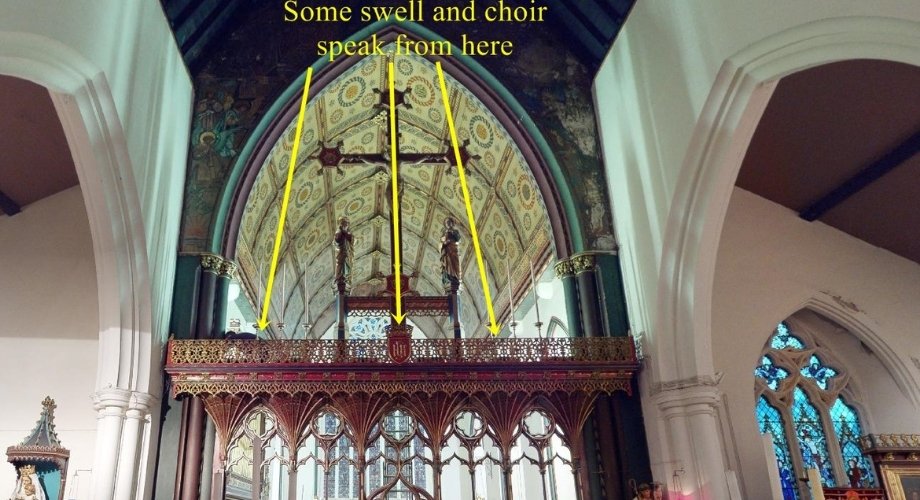
Inside the main pipe case on the far west side is a pipe façade facing the north aisle. The pedal trombone added in 1968 speaks from this position with ample space behind to construct a shelf to raise our speakers above the trombone wind chest and so also speak out towards the aisle. A large sub bass found a home in the area below the main bellows.
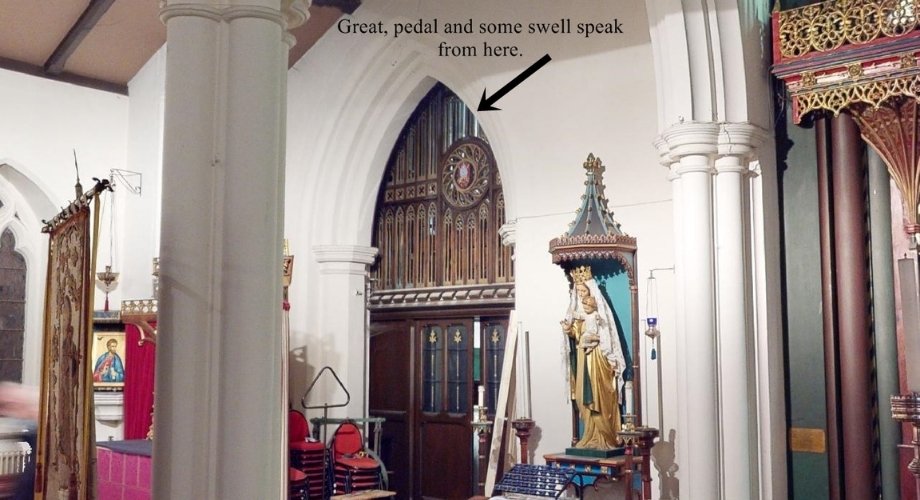
I had to leave before the job was finished so I have yet to hear the instrument but I understand from organist John Burdett that the results are good.
Initial voicing was carried out by our colleague Mark Gatrell from South Coast Organs. We will be back in 2021 to carry out any fine adjustments required.
I have had a passion for church organs since the tender age of 12. I own and run Viscount Organs with a close attention to the detail that musicians appreciate; and a clear understanding of the benefits of digital technology and keeping to the traditional and emotional elements of organ playing.
